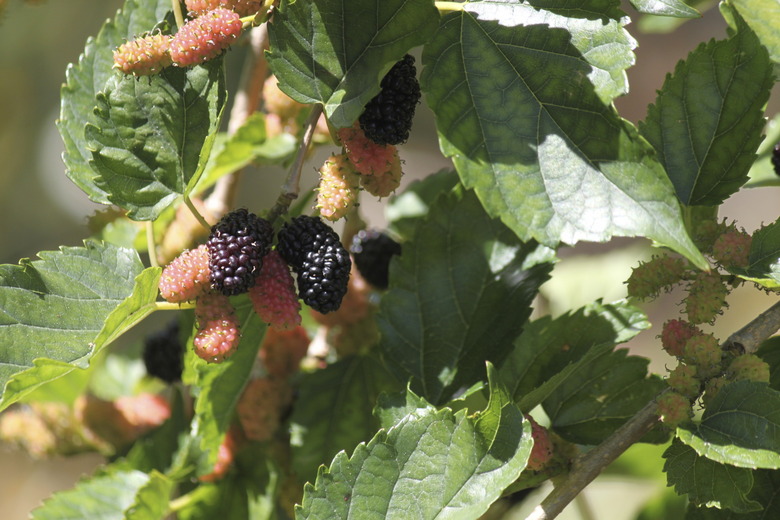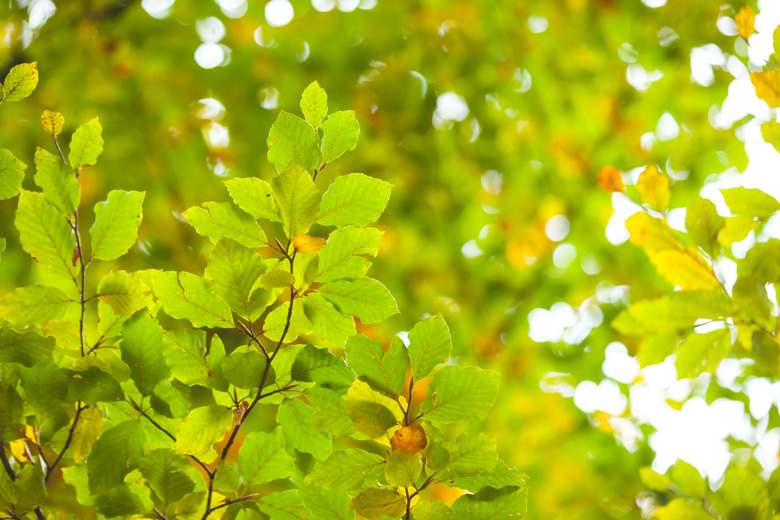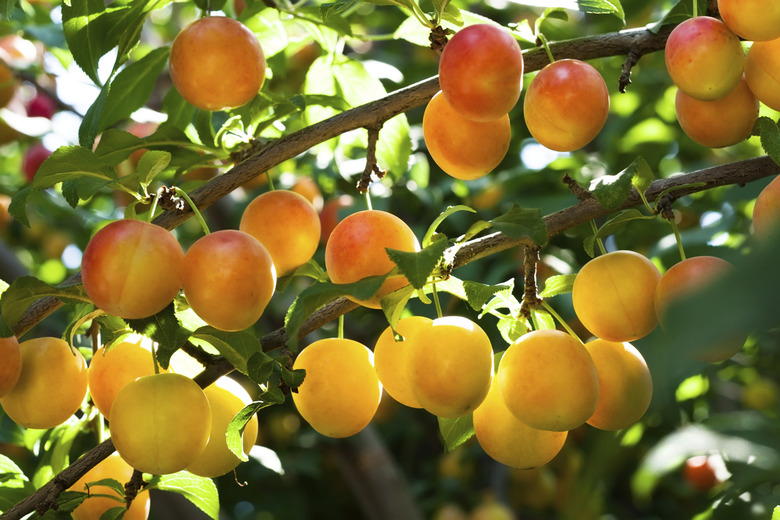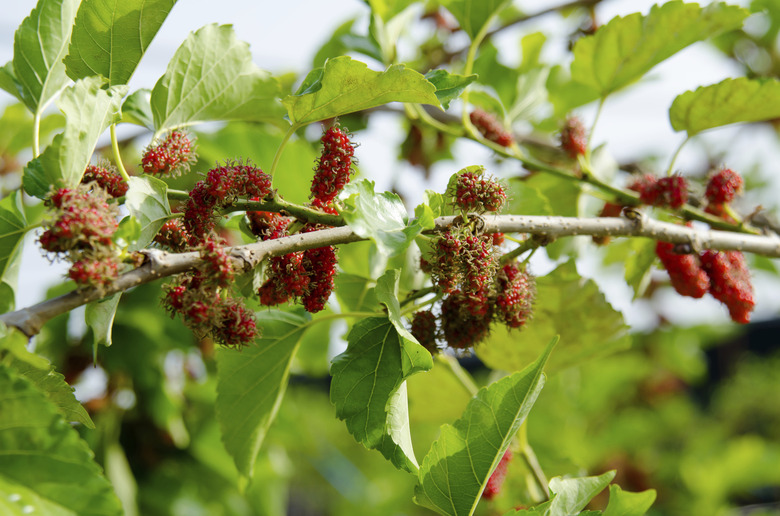How To Identify Trees With Berries In Texas
Seeing a tree with berries growing in Texas immediately narrows the list of possible species, since not all trees bear fruit and even fewer trees have fruits that resemble berries. Leaf shape is the usual starting point for identifying a species of tree, but the geographic location and type of fruit is useful for making a final identification.
Identifying Leaves
The first step in identifying a tree is to look at the leaf shape. Online tools, such as "ID By Leaf" from Texas A&M Forest Service's website Trees of Texas or "What Tree Is That?" from ArborDay.org, are useful for this task. Leaves are attached opposite each other on the branches, or alternate along the twig. Leaf shape, size, color, and texture will also help narrow down an identification for the berry-producing tree. Online leaf ID tools lead to tree fact sheets, which will describe the type of fruit produced. Fruits that look like berries may also be called drupes or multiple fruits.
- Seeing a tree with berries growing in Texas immediately narrows the list of possible species, since not all trees bear fruit and even fewer trees have fruits that resemble berries.
True Berries
True berries are soft, fleshy fruits containing seeds on the inside. One Texas native that bears this kind of fruit is the Texas persimmon (Diospyros texana), which is hardy in U.S. Department of Agriculture plant hardiness zones 7 through 9. This tree has oblong leaves with smooth edges in an alternate arrangement. The 1-inch fruits are edible and turn black when ripe. Another Texas tree that bears edible berries is the western mayhaw (Crataegus opaca). It is hardy in USDA zones 4 through 9, produces red berries used in jellies, and has slender, lobed leaves that grow alternately.
Berry-like Drupes
Unlike true berries, drupes have one seed enclosed in a woody shell and surrounded by fruity flesh — the peach is a good example of a drupe. Some drupes look like berries. Several Texas trees follow this fruiting pattern, including common hackberry (Celtis occidentalis) and sugarberry (Celtis laevigata). Hackberry is hardy in USDA zones 3 through 9, and has oval leaves with serrated edges in an alternate arrangement. Its fruits are small and orange-red or purple. Sugarberry, hardy in USDA zones 5 through 10, has longer leaves, each with a narrower tip, than Hackberry. This tree's fruit is red or black. Both sugarberries and hackberries are eaten by wildlife.
- True berries are soft, fleshy fruits containing seeds on the inside.
- Hackberry is hardy in USDA zones 3 through 9, and has oval leaves with serrated edges in an alternate arrangement.
Multiple Fruit
Some trees have clusters of tiny fruits called drupelets that form so closely together they look like a single berry. One of the Texas trees that bears fruit like this is red mulberry (Morus rubra). It is hardy in USDA zones 5 through 10 and the berries are edible. This tree's leaves are alternate, heart-shaped, and have toothed edges. It looks very different from other Texas trees with multiple fruits, like the sycamore (Platanus occidentalis), which is hardy in USDA zones 4 through 9 and bears hard, round fruits.
References
- Trees of Texas: How to ID
- University of Florida IFAS Extension: Diospyros Texana
- University of Florida IFAS Extension: Celtis Occidentalis
- University of Florida IFAS Extension: Celtis Laevigata
- Iowa State Forestry Extension: Red Mulberry
- Texas Native Plants Database: Mayhaw
- Purdue University Horticulture & Landscape Architecture: Mayhaw: A New Fruit Crop for the South




